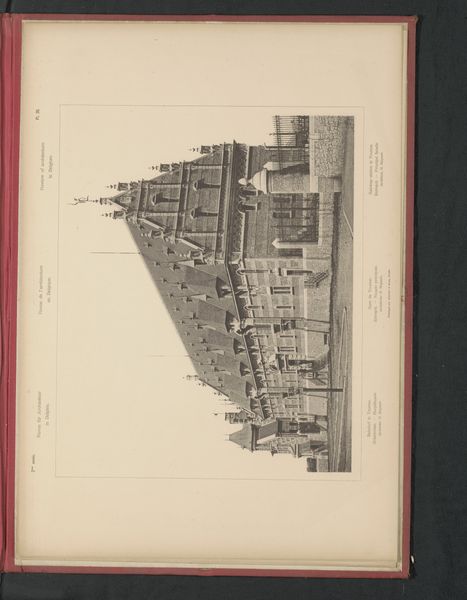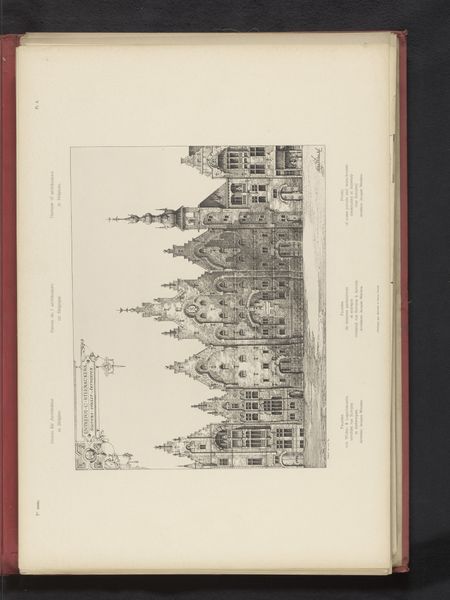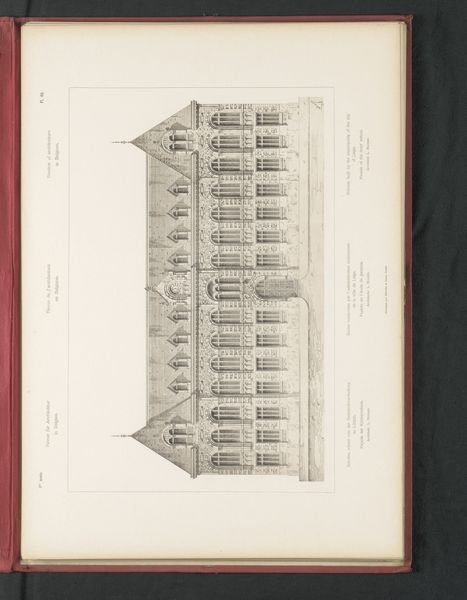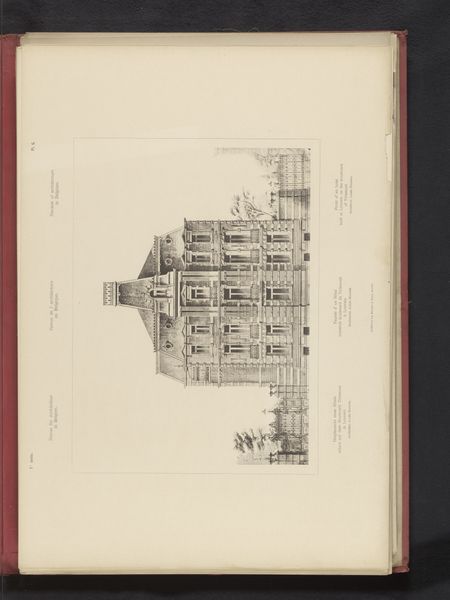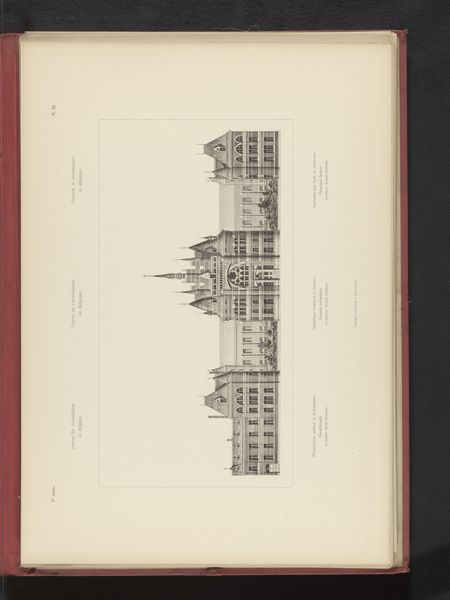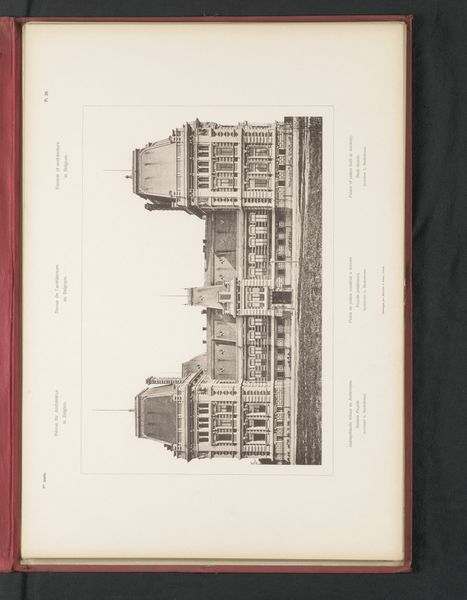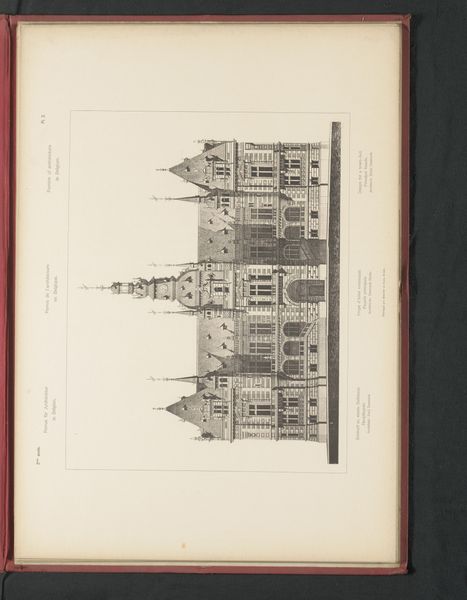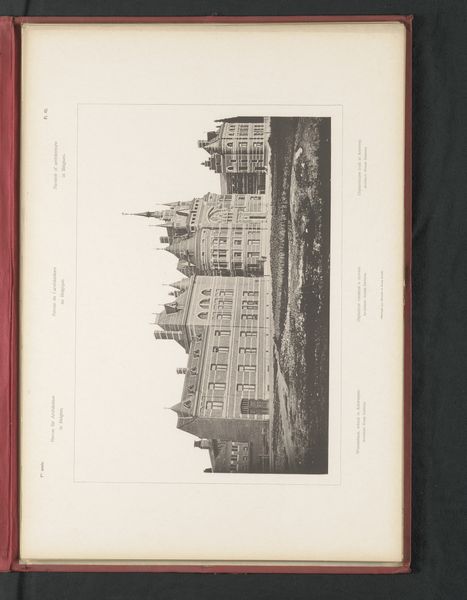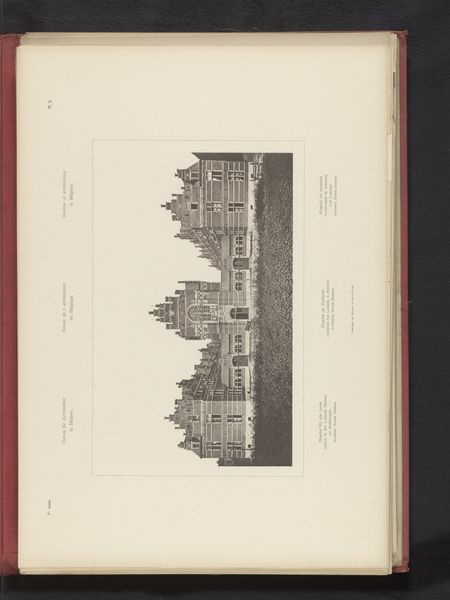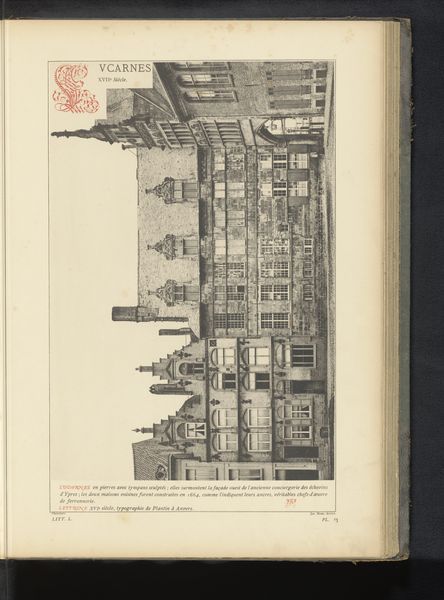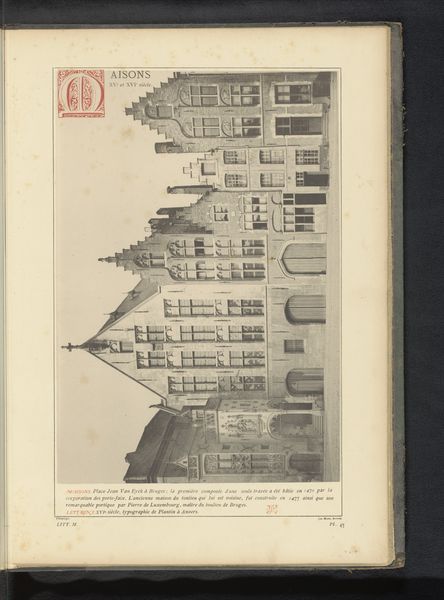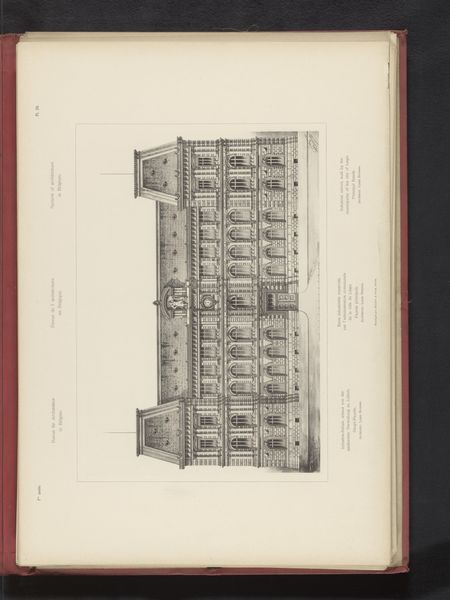
Gezicht op het gebouw van de nationale bank in Antwerpen, België before 1893
0:00
0:00
drawing, paper, ink, pencil, architecture
#
drawing
#
aged paper
#
toned paper
#
pen sketch
#
sketch book
#
paper
#
personal sketchbook
#
ink
#
pen-ink sketch
#
pencil
#
pen and pencil
#
pen work
#
sketchbook drawing
#
cityscape
#
sketchbook art
#
architecture
#
realism
Dimensions: height 264 mm, width 346 mm
Copyright: Rijks Museum: Open Domain
Editor: This is "Gezicht op het gebouw van de nationale bank in Antwerpen, België," a pen and pencil drawing of the National Bank building in Antwerp, likely completed before 1893 by Römmler & Jonas. I’m immediately struck by the intricacy of the architecture – so many windows and spires! It's also slightly faded, probably a scan from an old sketchbook. What’s your take on this? Curator: Oh, it’s like stumbling upon a secret architectural whisper, isn't it? This drawing sings of precision, of intent observation translated into meticulous strokes. The artists seem less concerned with rigid accuracy and more interested in capturing the building’s essence, almost like a memory fading at the edges. Do you get the feeling that it almost *yearns* to be a dream? Editor: A dream? I was focused on the realism – it feels like a very straightforward architectural study. Curator: Maybe, but straight forward to what end? Notice how the sharp lines blur ever so slightly. It is architectural, certainly, but it lives in a sketchbook, which is an intensely personal space, don’t you think? It makes me wonder what Antwerp was like at the time… Were Römmler and Jonas commissioned for this or just captivated by its imposing presence? The sepia tones contribute to its narrative—suggesting something just out of reach, slightly nostalgic. Editor: That’s a lovely thought. I hadn't considered the emotional aspect of the sketch itself. Curator: Exactly! A building rendered on toned paper in someone’s personal sketchbook isn't *just* a building; it's a portal! What else might we miss if we don’t scratch beneath the surface of what seems “straightforward”? Editor: This has made me think differently about architectural drawings – not just as representations, but also as personal stories. Curator: Good, because like the stones themselves, artworks are always, always telling us stories if we listen carefully.
Comments
No comments
Be the first to comment and join the conversation on the ultimate creative platform.
